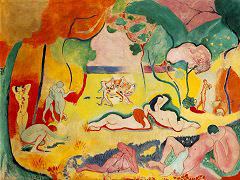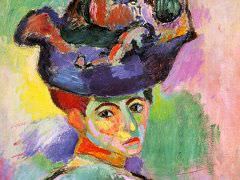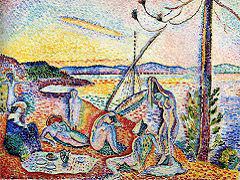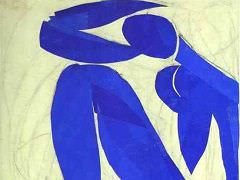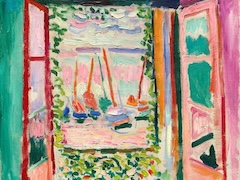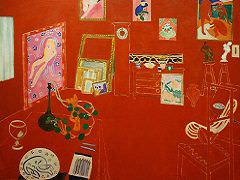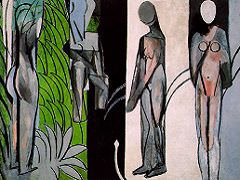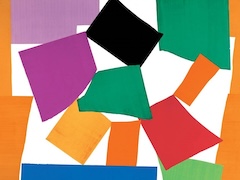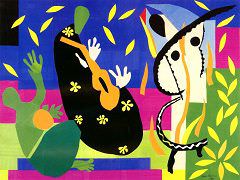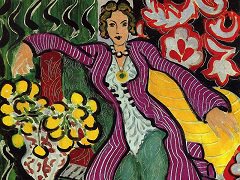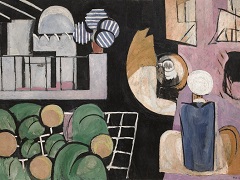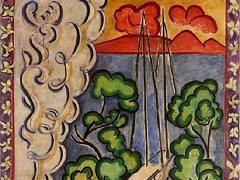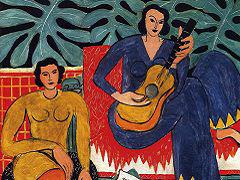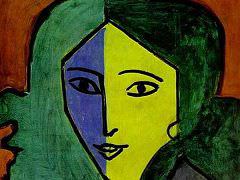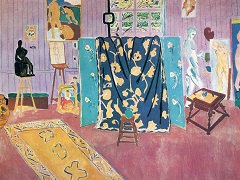Green Stripe, 1905 by Henri Matisse

Green Stripe, 1905, the depiction of the artist's wife, Amélie, is one of Matisse's most famous paintings and a masterpiece within 20th century portraiture.
Matisse has used color alone to describe the image. Her oval face is bisected with a slash of green and her coiffure, purpled and top-knotted, juts against a frame of three jostling colors. Her right side repeats the vividness of the intrusive green; on her left, the mauve and orange echo the colors of her dress. This is Matisse's version of the dress, his creative essay in harmony.
The green stripe down the center of Amélie Matisse's face acts as an artificial shadow line and divides the face in the conventional portraiture style, with a light and a dark side, Matisse divides the face chromatically, with a cool and warm side. The natural light is translated directly into colors and the highly visible brush strokes add to the sense of artistic drama.
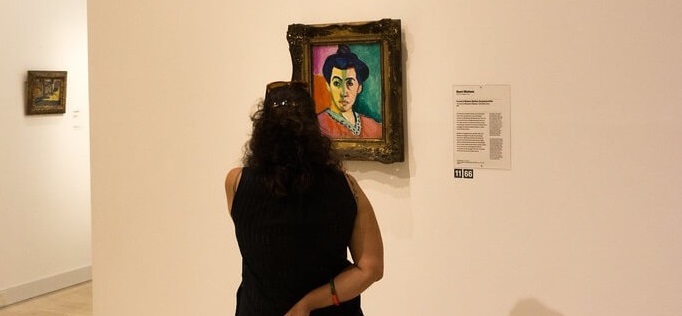
Much of its strength resides in its simple geometric structure and in the way in which the colours are combined. Spatial modulation is pared back to a minimum. Effects of light and shadow, which would have added depth to the image, have been translated into planes of colour instead.

